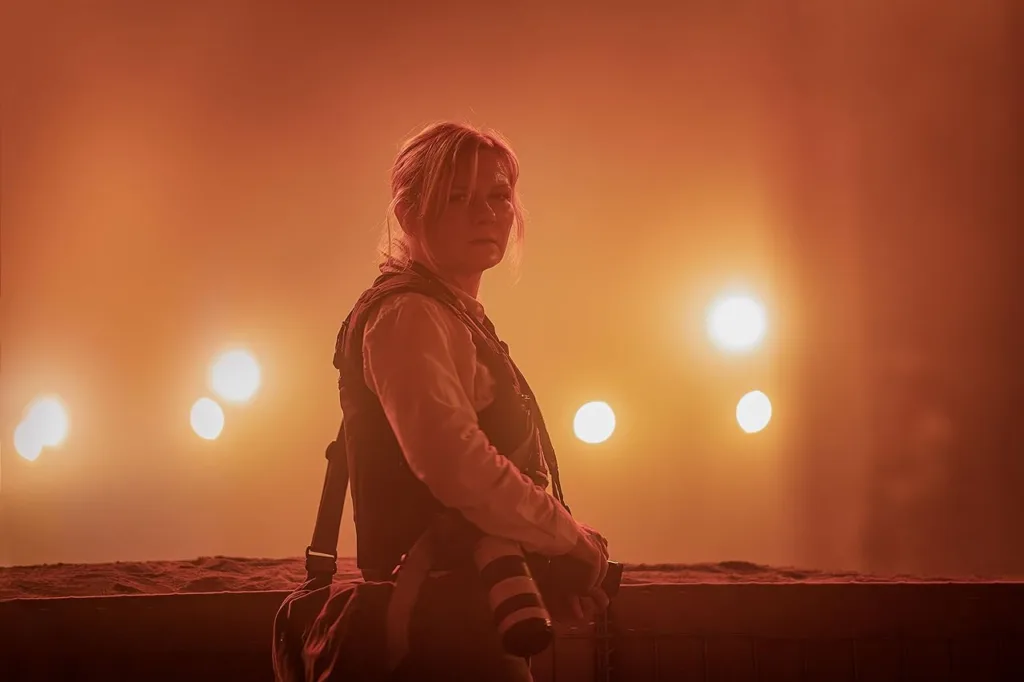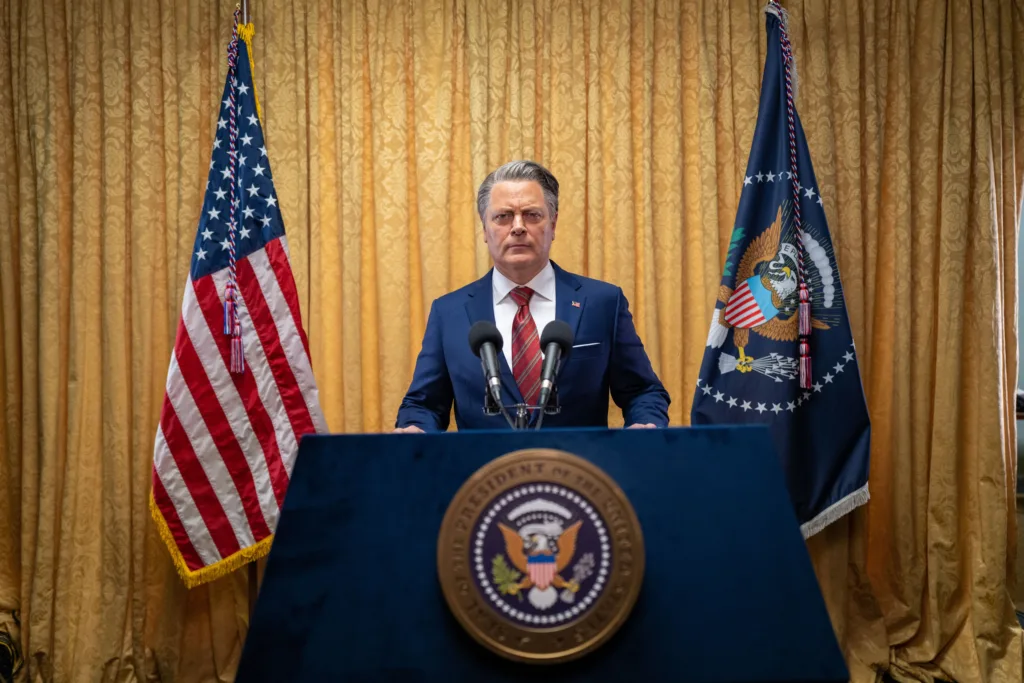As the credits rolled on the new A24 film Civil War, there were about a thousand different thoughts competing for attention in my brain. But the most succinct way to capture my experience with filmmaker Alex Garland’s latest feature is to describe it as an unrelenting assault on the senses. The decision to tell this war story through the eyes and lenses of photojournalists was a gutsy creative choice in itself, and Garland fully maximizes the filmmaking potential of this narrative device.

We often use the “lens” metaphor when describing the narrative perspective of a film, or any type of story, for that matter. In Civil War, Garland goes back to the roots of that metaphor and makes it literal with every ounce of his being. The central cast includes Kirsten Dunst, Wagner Moura, Cailee Spaeny, and Stephen McKinley Henderson as journalists from different backgrounds, generations, specialties, and experience levels who all find themselves on an odyssey from New York City to Washington, D.C. This movie does not really dig into the political details of the circumstances surrounding this massive conflict, because all we need to know is that masses of people across the entire country are suffering. Still, while you may hear descriptions of this film as “apolitical,” I personally believe that this is an inaccurate label for any story about a civil war. It is clearly expressed to the audience that the President of the United States within the world of Garland’s film (played by Nick Offerman) is a fascist 3rd-term dictator who bombs his own citizens. There is a coalition known as the Western Forces fighting for liberation, but at this point in the conflict, all sides are committing war crimes. Innocent, unarmed people are dying no matter who they are or where they come from. War is hell and nobody wins, but this sprawling weed of destruction grows from the seed of fascism. These journalists at the center of the story are willing to die to communicate this truth to the world. They consistently dive headfirst into intense war zones, armed with only their cameras. The imagery they capture displays the bleakest sides of humanity. Although this is a fictional narrative and the photography in the film we see is not directly from our real world, one needs only look to the very real war zones around the globe to be reminded that this is reality for millions of people.

There is a specific sequence in Civil War that perfectly encapsulates everything Garland is saying about war. It’s a scene with a shootout between snipers, and our core group of characters are caught in the crossfire. They temporarily find cover in the company of one of the snipers, and a conversation ensues. The dialogue is very simple but potent. Wagner Moura’s character, Joel, asks the sniper who they are shooting at, who is shooting at them, and why. Paraphrasing the response, the sniper says something along the lines of, “Well, these people are trying to kill us, so we’re trying to kill them. We have no idea who they are or why they’re shooting, but we’re just trying to survive.” This singular moment is Garland’s plea for individuals, groups, and the world at large to engage in constructive conversations. The atrocities of war that are depicted in this movie can be avoided, and should be at all costs.

Civil War is an immense tragedy of a film, and it desperately wishes that it was not compelled to show the war happening within in it. But it feels a responsibility to do so, so it does. Alex Garland has made an unforgettable anti-war film that has earned my deep respect.